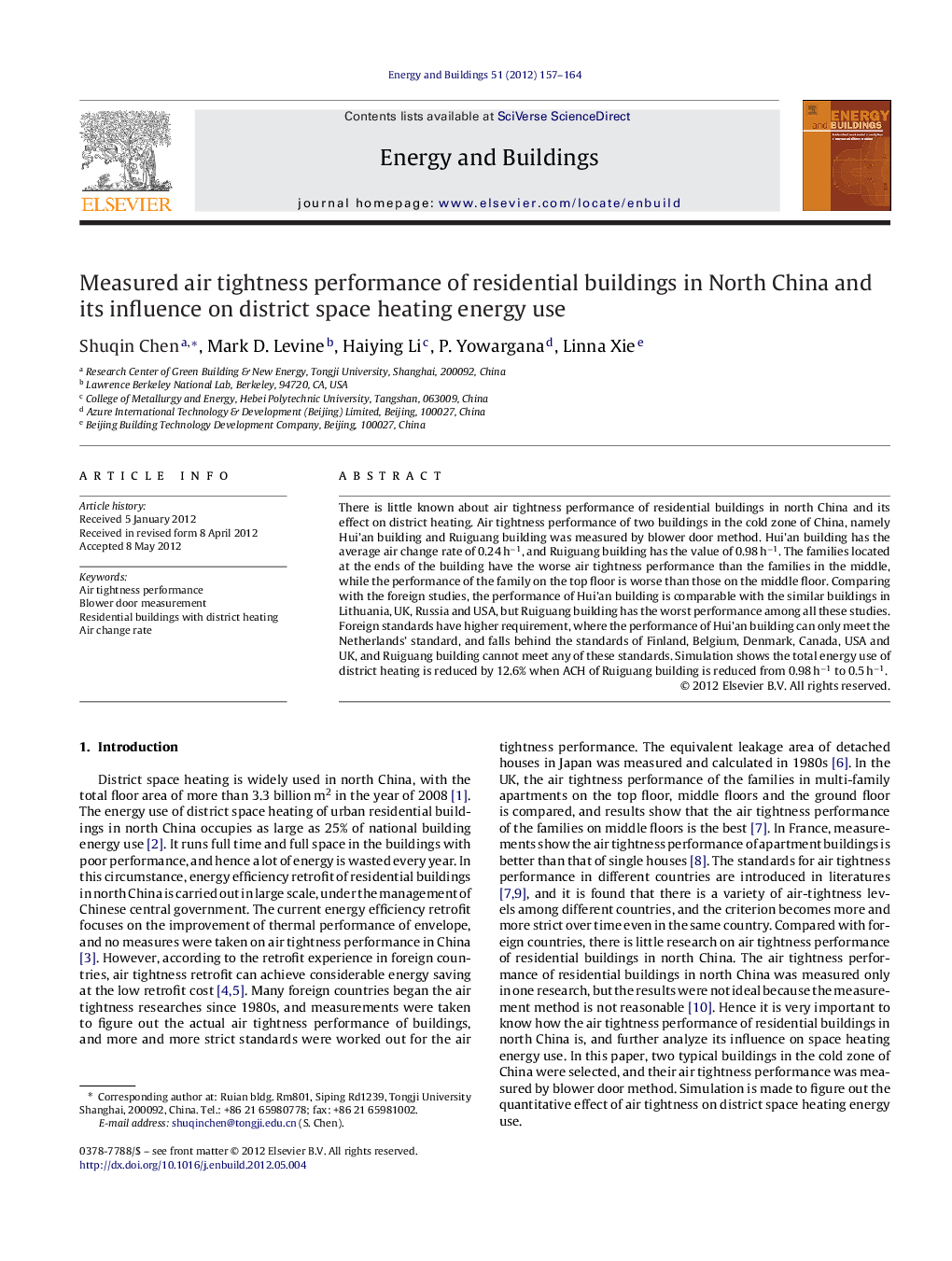| کد مقاله | کد نشریه | سال انتشار | مقاله انگلیسی | نسخه تمام متن |
|---|---|---|---|---|
| 263614 | 504079 | 2012 | 8 صفحه PDF | دانلود رایگان |

There is little known about air tightness performance of residential buildings in north China and its effect on district heating. Air tightness performance of two buildings in the cold zone of China, namely Hui’an building and Ruiguang building was measured by blower door method. Hui’an building has the average air change rate of 0.24 h−1, and Ruiguang building has the value of 0.98 h−1. The families located at the ends of the building have the worse air tightness performance than the families in the middle, while the performance of the family on the top floor is worse than those on the middle floor. Comparing with the foreign studies, the performance of Hui’an building is comparable with the similar buildings in Lithuania, UK, Russia and USA, but Ruiguang building has the worst performance among all these studies. Foreign standards have higher requirement, where the performance of Hui’an building can only meet the Netherlands’ standard, and falls behind the standards of Finland, Belgium, Denmark, Canada, USA and UK, and Ruiguang building cannot meet any of these standards. Simulation shows the total energy use of district heating is reduced by 12.6% when ACH of Ruiguang building is reduced from 0.98 h−1 to 0.5 h−1.
► Hui’an bldg. and Ruiguang bldg. have the ACH of 0.24 h−1 and 0.98 h−1, respectively.
► Families on the top floor or at two ends have ACH larger than those in the middle.
► Air tightness of Hui’an comes up to foreign buildings, but Ruiguang is far behind.
► Foreign standards have higher air tightness requirement than experiment results.
► Simulated heating energy use is reduced by 12.6% if ACH is cut half from 0.98 h−1.
Journal: Energy and Buildings - Volume 51, August 2012, Pages 157–164